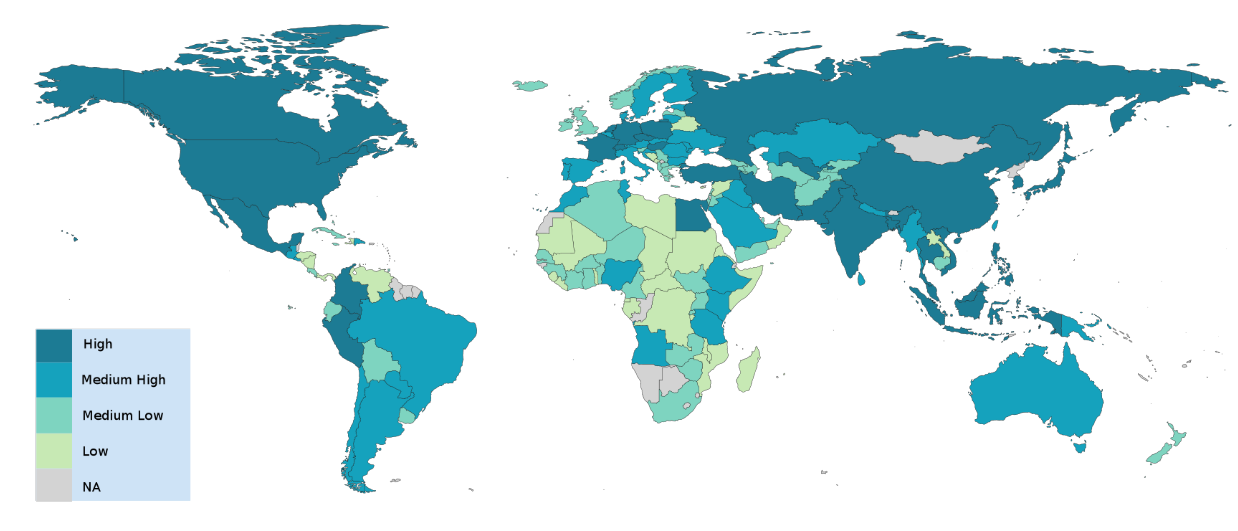The Choice of Target Market in an Internationalization Project
Published by Pier Paolo Galbusera. .
Bestpractice Internationalisation Internationalisation tools
Log in to use the pretty print function and embed function.
Aren't you signed up yet?
signup!
Internationalizing is something quite different from simply exporting
The internationalization process is not a synonym for mere export. Exporting can take place, in fact, even in the absence of marketing and commercial actions specifically addressed to a foreign market, but as a result of a search by the customer of the desired good or service. In the last 20 years the world market has radically changed. If in the last century a "passive" export strategy could have been sustainable, it has nowadays become less and less sustainable for producers located in developed countries. Only a strategy of actual internalization, with marketing/commercial actions aimed at specific markets, can produce results lasting over time.
Internationalization starts with the market selection
The first step for an internationalization strategy is the choice of the market (or markets) on which to direct marketing and commercial investments. Choosing the market that presents the greatest opportunities and the lowest risks is fundamental to increase the chances of success of the project. The optimal decision-making process must, on the one hand, be able to involve all the company departments interested and, on the other hand, make the best use of all available information. To this end, a tool that I have been using for a couple of years is ExportPlanning's Market Selection module. A structured market selection has become essential for me at the beginning of every export consulting project. The time to enter the various markets is getting longer and longer and SMEs - which usually have limited resources - must necessarily define priority markets where to direct necessary commercial and marketing investments.
However, it can sometimes happen that the customs code does not correspond precisely to the market served by the company. Sometimes other goods are comprised under a specific code and it is therefore good to be cautious when drawing conclusions . Examining other information, complementary to that given by Market Selection, can be useful. Here is an example.
A case study: machine for pizza preparation
In recent months I have collaborated with a start-up company that has designed an innovative machine for pizza preparation. The customs codes that could help us in defining the priority markets were Dough mixers (843810.10) and Electric ovens (851410.10). These are certainly complementary products, whose import levels and forecasts can give a good indication of the markets with the greatest opportunities. Below is a world map of the results obtained from the Market Selection module.
World market opportunities for machine for pizza preparation

As the map shows, there are three world areas with "High" potential:
- the Franco-German European area;
- the North American area;
- Asia in general.
This first analysis allowed us to make a first selection, which was subsequently deepened by integrating Export Planning data with other information. The customs codes considered include products that are also purchased from businesses other than pizzerias, like bakeries and pastry shops. In order to refine the analysis, we collected other information, more specific for our market:
- markets in which our competitors are present (these data are sometimes available on competitors' websites, as a dealer list; it is otherwise possible to identify them through an online search by images, using the competitors' logo or the photo of the machines themselves);
- the number of Domino’s Pizza stores per country: Domino’s is a leading chain present all over the world (this data can be found on the web);
- the price of a large margherita in dollars in the various countries (this data can also be found on the web).
Putting all this information together in a simple Excel file and giving each one a weight (from 1 to 5), according to the importance you attach to it, you can make a summary and identify priority markets.
Potentialities, adjusted for costs and risks
In addition to these analyses on market potential, some economic-financial considerations have to be weighed up, as well: the currency of the country, the distance and therefore the related commercial costs (travel and transport), the credit risk of the country, etc.. Last but not least, our perception: grapevine always provides us with information that allows to read the data collected with a more critical eye.


